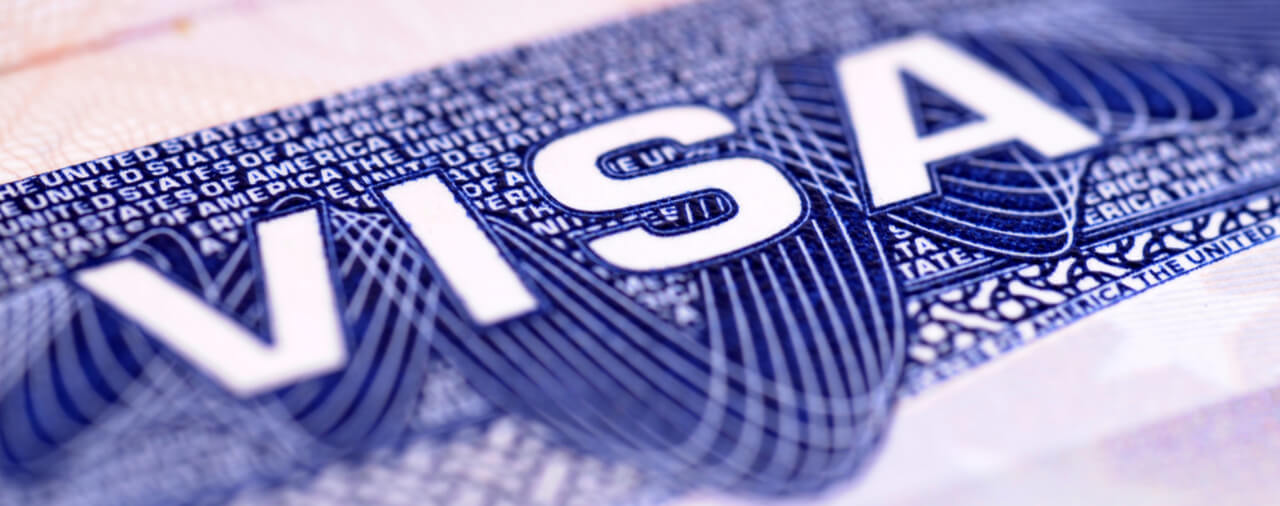- Update
- Introduction: USCIS and Preconceived Immigrant Intent within 30/60 Days of Entry
- The 30/60 Day Rule in Short
- USCIS and the 30/60 Day Rule
- Related Issues Regarding Adjustment of Status
- Conclusion
Update
Update (Oct. 9, 2017): The Department of State (DOS) replaced the 30/60 day rule with a new “90 day rule,” extending the presumption of misrepresentation for actions taken inconsistent with one’s status out to 90 days from admission, entry, or obtaining an immigration benefit. As we make clear in this article and in our guidance on the 90 day rule, neither the 30/60 day rule or the 90 day rule are binding on the United States Citizenship and Immigration Services (USCIS). Rather, they may be taken under advisement by agencies other than the DOS. This article examines how the USCIS and the Administrative Appeals Office (AAO) applied the logic of the 30/60 day rule to making admissibility determinations. While it remains to be seen how the USCIS and AAO will apply the logic of the new 90 day rule, its application of the old 30/60 day rule may provide clues in this regard. Please see our full article to learn about the new 90 day rule and our archived article to learn about the old 30/60 day rule.
Introduction: USCIS and Preconceived Immigrant Intent within 30/60 Days of Entry
In order to help consular officers determine, based on actions of a nonimmigrant, whether he or she is inadmissible for misrepresenting a material fact in applying for a visa, the Department of State created the 30/60 Day Rule in 9 FAM 302.9-4(B)(3). However, the 30/60 day rule is not a “rule” that exists in the statutes or regulations, but purely a guide for considering whether misrepresentation occurred. Furthermore, because the “rule” only exists in the Foreign Affairs Manual (FAM), it is not binding on the United States Citizenship and Immigration Services (USCIS). However, USCIS has regularly applied the 30/60 day rule to determine whether visitors on B status, or visitors under the Visa Waiver Program, misrepresented a material fact in order to gain admission to the United States.
In this article, we will look at how USCIS has used the 30/60 day rule. Additionally, we will look at precedent decisions regarding adjustment of status from B visa status when preconceived intent is established.
Please read our article about the 30/60 day rule for a full discussion of the rule itself. To learn about permissible and impermissible activities while on B1 status or B2 status, please follow the corresponding links.
The 30/60 Day Rule in Short
Under 9 FAM 302.9-4(B)(3), the 30/60 day rule is used when a nonimmigrant violates his or her status in one of the following ways within 30/60 days of entry:
- a. Actively seeking unauthorized employment and, subsequently, becom[ing] engaged in such employment
- b. Enrolling in a full course of academic study without the benefit of appropriate change of status
- c. Marrying and taking up permanent residence; or
- d. Undertaking any other activity for which a change of status or an adjustment of status would be required, without the benefit of such a change or adjustment.
The 30/60 day rule generally arises with regard to nonimmigrants who enter the United States on B status. The purpose of the 30/60 day rule is to help consular officers determine whether the nonimmigrant willfully misrepresented a material fact regarding his or her intentions in obtaining a visa during the visa application process. Such a misrepresentation would render the nonimmigrant inadmissible to the United States under section 212(a)(6)(C)(ii) of the Immigration and Nationality Act (INA) [see our article about this inadmissibility ground]. “Misrepresentation” is distinct from “failure to volunteer information,” which would not trigger 212(a)(6)(C)(ii) inadmissibility.
Under the rule, inconsistent conduct within 30 days of entry creates a rebuttable presumption of misrepresentation. Inconsistent conduct after 30 days of entry, but within 60 days of entry, does not create a presumption of misrepresentation. However, if the consular officer believes that the facts in the case provide “reasonable belief” of misrepresentation, he or she must give the alien the opportunity to present “countervailing evidence.” If inconsistent conduct occurs after 60 days of entry, DOS will not consider the conduct grounds for a finding of 212(a)(6)(C)(i) inadmissibility.
USCIS and the 30/60 Day Rule
The USCIS Policy Manual
The USCIS addresses the 30/60 day rule in its Policy Manual for immigration officers. 8 USCIS PM J.3 states:
The U.S. Department of State (DOS) has developed a 30/60-day rule to assist consular officers in evaluating misrepresentation in cases involving a person who was in the United States and whose conduct is or was inconsistent with representations made to the consular officer concerning his or her intentions at the time of the visa application.
An officer should keep in mind that the 30/60 day rule is not a “rule” in the sense of a binding principle of decision. The rule is simply an analytical tool that may be helpful in resolving in a particular case whether a person’s actions support of finding of fraud or misrepresentation. Officers must not use Foreign Affairs Manual (FAM) guidance in a denial.
In short, the Policy Manual recognizes the 30/60 day rule as an “analytical tool” used by DOS. However, it is careful to note that it is neither a “rule” nor in any way minding on USCIS officers. Furthermore, it explicitly states that USCIS officers may not use guidance from the DOS’s FAM in rendering a decision in a case.
Accordingly, it is important to note as well that section 212(a)(6)(C)(i) of the INA does not preclude an inadmissibility finding for conduct that takes place after 60 days of entry. While consular officers will not consider inconsistent conduct that occurs after 60 days from entry grounds for 212(a)(6)(C)(i) inadmissibility, there is nothing precluding USCIS from doing so.
Non-Precedent Administrative Appeals Office Decisions
Aliens may appeal many types of adverse immigration decisions to the Administrative Appeals Office (AAO). The AAO, which exists as part of USCIS, reviews certain decisions by USCIS officers. Among the issues that the AAO has the authority to review are appeals of denials for section 212(i) waivers of inadmissibility stemming from section 212(a)(6)(C)(i). Accordingly, the AAO has reviewed many appeals of 212(i) waivers denials stemming from when a B visa holder was found to be inadmissible for misrepresentation on account of inconsistent conduct within 30/60 days of entry. Many of these decisions are interesting in that they show that both the AAO and USCIS officers often rely on the 30/60 day rule as an adjudicative principle.
However, before we look at examples, it is important to note that all of the following decisions are “non-precedent.” This means that the decisions only applied to the specific case and are not binding on any future USCIS decisions. These non-precedent decisions are currently all we can rely upon, for neither the Board of Immigration Appeals (BIA) nor the federal courts has issued precedent decisions that address the USCIS’s use of the 30/60 day rule in rendering agency decisions.1 While we can find certain trends trends in USCIS’s application of the 30/60 day rule, none of the following AAO decisions are binding on subsequent cases.
Finding Inadmissibility When Applying 30/60 Day Rule
Matter of ___, (AAO, Las Vegas, January 31, 2014) [WL 2351678]
Applicant for a 212(i) waiver (seeking LPR status as an IR) had been found inadmissible after stating purpose for applying for a B2 visa was to “visit family” when the actual purpose was to marry his LPR fiancée and reside in the United States with his LPR spouse. Applicant conceded that he failed to provide information, but challenged the “misrepresentation” finding. Applicant argued that the initial decision’s citation of the 30/60 day rule was in error, arguing that the rule is “inapplicable to proceedings before USCIS.” The AAO rejected this argument, stating that “[a]lthough the AAO is not bound by the FAM, it finds its analysis in these situations to be persuasive.” Furthermore, it stated that the applicant “presents no legal support to support his assertion that no presumption of misrepresentation may arise in the applicant’s circumstances.”
Matter of ___, (AAO, Fresno, December 24, 2013) [WL 8124095]
Applicant for a 212(i) waiver (seeking LPR status as an IR) had been found inadmissible for obtaining a B2 visa for the stated purpose of visiting the United States when her true intent was to reside in the United States with her LPR spouse. Applicant had an approved Form I-130 petition at the time of entry, and filed for adjustment of status within two weeks of entry. The decision cites the 30/60 day rule and states that “[a]lthough USCIS is not bound by the [FAM], we have consistent followed the 30/60 day rule.” It further stated that “[m]oreover, the documentation in the record overwhelming[ly] supports a finding of misrepresentation.”
Matter of ___, (AAO, Washington DC, September 21, 2009) [WL 4983206]
Applicant for a 212(i) waiver (seeking LPR status as an IR) had been found inadmissible for obtaining a B2 visa to visit the United States but then within 30 days of entry commenced unauthorized employment. The AAO cited the FAM in its decision, stating that “[a]lthough the AAO is not bound by the [FAM], it finds its analysis to be persuasive.”
Overturning Inadmissibility Using the 30/60 Day Rule
Matter of ___, (AAO, Los Angeles, April 5, 2012) [WL 8497716]
Applicant for a 212(i) waiver (seeking LPR status as an IR) had been found inadmissible after obtaining a B2 visa to visit relatives, but then engaging in unauthorized employment within 30 days of entry. Applicant stated that shortly after entry, her sister in her home country was diagnosed with breast cancer, and that she only then decided to work as a bookkeeper for her cousin in order to support her mother (a burden which had previously fallen on her sister). The AAO cited the 30/60 day rule, stating that although “USCIS is not bound by the [FAM], in the absence of a conflicting USCIS or [DHS] policy and in the interest of consistency, the AAO has long applied the 30/60 day rule.” In the instant case, the AAO found that the applicant had submitted sufficient evidence to rebut the presumption of misrepresentation created by her inconsistent actions within 30 days of entry.
Matter of ___, (AAO, Santa Ana, March 4, 2013) [WL 5176203]
Applicant for a 212(i) waiver (seeking LPR status as an IR) had been found inadmissible after obtaining a B1 visa to attend a work-related convention, but subsequently marrying a U.S. citizen and seeking permanent residency. Furthermore, the applicant admitted under oath that he had not attended the convention for which the B1 visa was granted because his employer had never mailed the ticket. The AAO cited the 30/60 day rule and stated that “[a]lthough not bound by the [FAM], the AAO finds its analysis in these situations to be persuasive.”
The AAO noted that the applicant both filed an for an immigrant visa and married outside of the 60-day window. Using that and other evidence, the AAO found that there was insufficient evidence to establish that the applicant had misrepresented his intentions in applying for the B1 visa.
Matter of ___, (AAO, New York, June 26, 2007) [WL 5327183]
Applicant for a 212(i) waiver (seeking LPR status as an IR) after entering the United States under the Visa Waiver Program to visit her LPR mother for less than 90 days, but then had an immigrant visa petition filed on her behalf by her mother. The AAO cited the 30/60 day rule and stated that “[a]lthough the AAO is not bound by the [FAM], it finds its analysis to be instructive in the present case.”
The AAO noted that the immigrant visa was filed eight months after the applicant’s entry under the Visa Waiver Program, well after the 60-day cutoff in the FAM. It used that to support its finding that the evidence in the record did not establish that the applicant had intended to seek permanent residency at the time she gained admission under the Visa Waiver Program.
Related Issues Regarding Adjustment of Status
Although there are no precedent BIA or AAO decisions regarding the use of the 30/60 day rule specifically, there is a litany of precedent decisions regarding adjustment of status applications for persons who enter the United States on B2 status with the preconceived intent to immigrant, but who were not found to have been inadmissible under the statutory scheme that existed at the time. As we will see, merely not being found to be inadmissible does not necessarily guarantee that an adjustment of status application will be approved.
Preconceived Intent and Adjustment of Status
Matter of Blas, 15 I&N Dec. 626 (BIA 1974)
The BIA upheld the decision of the Immigration Judge to deny adjustment of status for an alien who entered the United States on a B2 visa (which he subsequently overstayed) with the intent of divorcing his wife in the Philippines and marrying a LPR and seeking LPR status for himself. The BIA stated that although his misrepresentations did not rise to the level of rendering him ineligible for a visa, and in spite of the fact that favorable discretion is ordinarily exercised for immediate relatives, the Immigration Judge acted within his discretion to deny adjustment of status in light of the serious adverse factors weighing against the favorable exercise of discretion.
Jain v. INS, 612 F.2d 683 (2d Cir. 1979)
The Second Circuit affirmed the BIA’s denial of adjustment of status for an adjustment of status applicant who entered on B1 status with the preconceived intent to start a business in the United States and seek permanent residency.
Matter of Cavazos, 17 I&N Dec. 215 (BIA 1980); Matter of Ibrahim, 18 I&N Dec. 55 (BIA 1981)
The Matter of Cavazos concerned a citizen of Mexico who entered the United States as a visitor using a border crossing card, married his U.S. citizen spouse on the same day, and subsequently sought adjustment of status in deportation proceedings that stemmed from having stayed in the United States for longer than was permitted. In the Matter of Cavazos, the BIA held that notwithstanding preconceived intent, adjustment of status should ordinarily be granted for immediate relatives absent other negative factors.
The Matter of Ibrahim explicitly limited Cavazos to adjustment of status petitions in the immediate relative category.
However, it is important to note that neither the Matter of Cavazos nor the Matter of Ibrahim waive inadmissibility for fraud or misrepresentation of a material fact. If the adjustment applicant is found inadmissible, he or she will require a 212(i) waiver in order to be eligible for an immigrant visa. The decisions hold only that preconceived intent alone should not lead to the denial of adjustment of status for the beneficiary of an immediate relative petition.
Choe v. INS, 11 F.3d 925 (9th Cir. 1993)
The Ninth Circuit held that an alien who had adjusted from B2 status to permanent resident status in an employment-based category could not be subsequently deported for having had preconceived intent at the time of the initial entry as a nonimmigrant. It stated that “[t]he time for the INS to address preconceived intent is at the adjustment of status stage.” However, the Ninth Circuit held that such an LPR could be deported if he or she is found to have been statutorily ineligible for adjustment of status in the first place.
Conclusion
Although the 30/60 day rule is not a “rule” in the sense that it exists in statutes or regulations, it is likely that a nonimmigrant who enters on B status will be found to be inadmissible for misrepresentation if he or she violates status in a blatant way within 30 days of entry. Consular officers are directed to assume misrepresentation in these cases, and the USCIS has applied the 30/60 day analysis, although it is not bound by it. Furthermore, in the adjustment of status context, “preconceived intent” is considered a “serious adverse factor” (see the Matter of Blas) weighing against adjustment of status even when the statements of a nonimmigrant and his or her subsequent actions do not rise to the level of grounds for inadmissibility for misrepresentation of a material fact.
When seeking a nonimmigrant visa, it is imperative that the applicant be fully honest in the visa application process. The consequences of being denied an immigrant visa pale in comparison to the consequences for being found to have committed fraud or misrepresentation. Furthermore, a nonimmigrant is responsible for following the rules of his or her status. If a nonimmigrant is ever unsure about whether a given action is permissible under status, it is his or her responsibility to seek counsel on the subject.
If a nonimmigrant finds him or herself charged with inadmissibility for fraud or misrepresentation, he or she should consult with an experienced immigration attorney for counsel immediately.
- But see: Bradley vs. Att’y. Gen. of the U.S., 603 F.3d 235 (6th Cir. 2010), the petitioner made arguments regarding the 30/60 day rule in oral arguments and in a supplemental letter issued to the Court. However, because the argument neither appeared in his opening brief nor in his reply brief, the Court deemed the argument waived.





